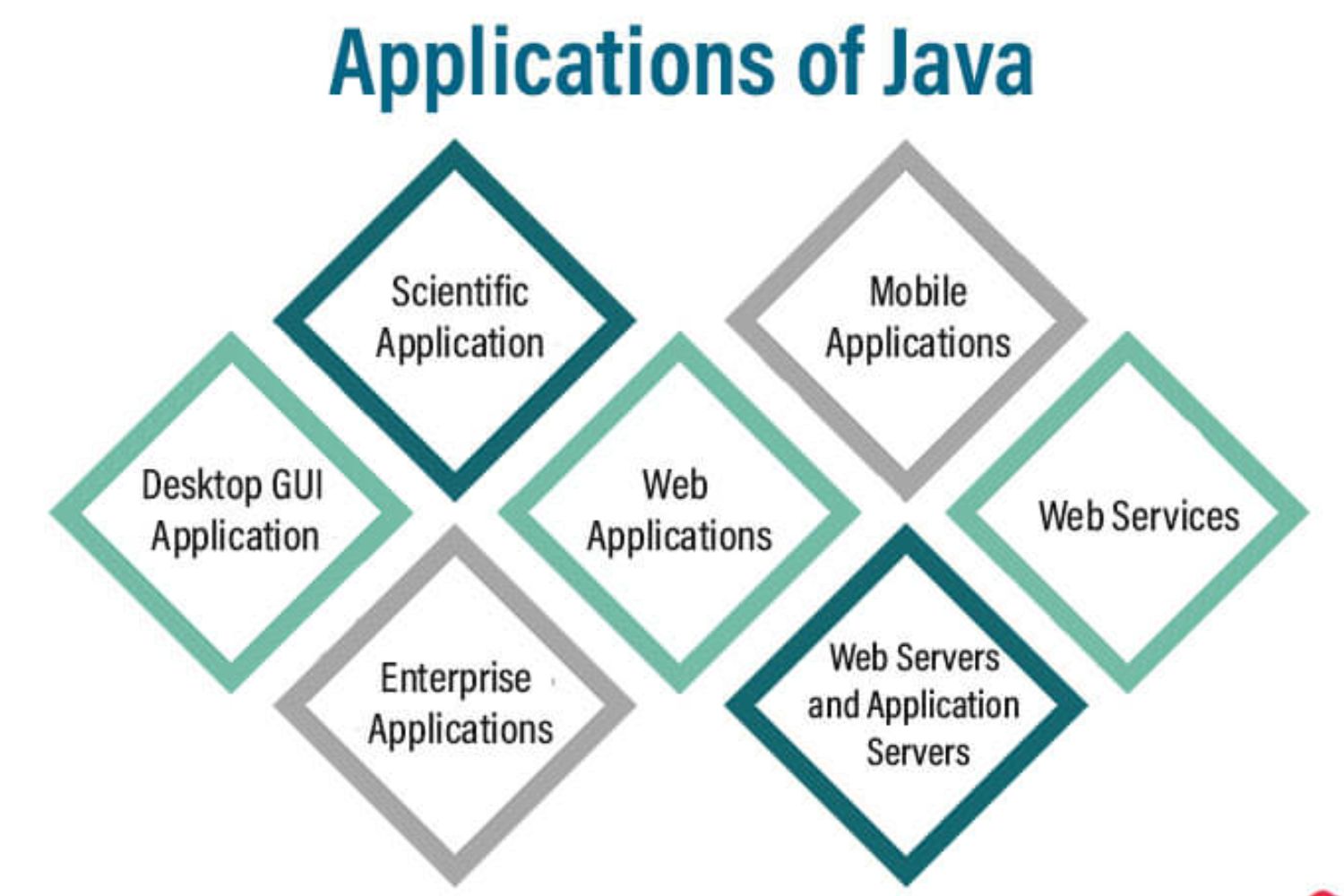What uses does Java serve?
Find out which businesses use Java, its main uses, how to pick it up quickly, and its applications.

This article examines some of Java’s uses and explains why it’s such a well-liked and adaptable programming language. Along with a list of some of the greatest Java courses, we’ve also included some fundamental Java project ideas.
Title: Unraveling the Power and Versatility of Java
Introduction
Java, the robust and versatile programming language, has been a cornerstone of software development for decades. Its widespread adoption in various domains, including web applications, mobile apps, enterprise systems, and more, is a testament to its enduring relevance and reliability. In this blog, we’ll take a deep dive into the world of Java, exploring its history, key features, and the reasons why it remains a top choice for developers worldwide.


A Synopsis of Java’s Past
The story of Java begins in the early 1990s when James Gosling and his team at Sun Microsystems set out to create
a language that could operate across various computing platforms. The result was Java, unveiled in 1995, with its famous “Write Once, Run Anywhere” motto. This portability was made possible through the use of the Java Virtual Machine (JVM), which enables Java code to run on different platforms without modification.
Current Java Situation
In its present state, Java continues to be a prominent and versatile programming language. With a strong emphasis on portability and a large developer community, Java remains a key player in enterprise software development and Android app creation. It benefits from a well-established ecosystem of libraries and tools, making it a top choice for various applications. Frequent updates and improvements, such as enhanced performance and memory management, ensure Java’s continued relevance in the ever-evolving world of technology.


Applications does the Java programming language have?
Java is a very versatile programming language that can be used on a wide range of platforms and gadgets, including smart TVs and smartphones. Among other things, it’s used to create distributed, cloud-based, gaming, big data, Internet of Things (IoT) devices, enterprise software, and mobile and web apps. Here are some specific, real-world examples of applications that are programmed with Java.
Smartphone applications
Java is used in the development of most, if not all, mobile applications. Java’s stable platform and versatility make it a preferred language for mobile app developers. Java is used in many well-known mobile apps, such as Cash App, Signal, and Spotify.
Online programs
Java is used in the development of a large number of web applications. Among the most well-known are Twitter and LinkedIn.
Business software
Software designed to support a sizable group or organization is known as enterprise software. It consists of software such as supply chain management applications and billing systems. Java is a popular language among developers creating enterprise software because of its high scalability.
Videos
RuneScape and the original Minecraft are two well-known titles created in Java.
Applications of IoT
Java is used to program many Internet of Things (IoT) applications, which can be found in smart TVs, automobiles, heavy machinery, work facilities, and other places. Because of how simple it is to move Java code between platforms, it is a popular choice for Internet of Things developers.

Why Choose Java
Ubiquitous: Java’s extensive user base and wide adoption mean that there is a vast pool of resources, documentation, and tools available to developers. Whether you’re a novice or an experienced programmer, you’ll find ample support in the Java community.
Security: Java is designed with security in mind, including features like bytecode verification and automatic memory management to prevent common vulnerabilities.
Performance: Java’s performance has significantly improved with the introduction of Just-In-Time (JIT) compilers. Modern Java applications can be highly optimized and run efficiently.
Scalability: Java is ideal for building large-scale applications. Its support for multithreading and distributed computing makes it a top choice for enterprise-level projects.
Versatility: Java is used in diverse domains, such as web development, Android app development, enterprise software, scientific applications, and more. It’s a versatile language suitable for a variety of contexts.
Why is Java such a hit? Features that Make Java
According to the TIOBE index, which ranks programming language popularity worldwide, Java is the third most popular language, behind Python and C. The widespread use of the language can be attributed to a number of noteworthy Java features:
Flexibility: For the longest time, Java has been the standard programming language used to create software development tools like Eclipse, IntelliJ IDEA, and NetBeans IDE as well as Web and Android apps.
Comfortable for users: Java’s grammar is similar to that of English, which makes it perfect for beginners. Java can be learned in two phases: core Java and advanced Java.
Tools for development: One of the most interesting things about Java is the Integrated Development Environment (IDE). Editors, debuggers, and automation tools are all included in the Java IDE.
A strong API: The Application Programming Interface (API) of Java is extensive and broad, with numerous methods that can be used directly in any code, despite the language having only roughly fifty keywords.
Excellent record-keeping: Java is totally free since it is an open-source programming language. An essential aspect of Java is its extensive documentation. It comes with an extensive manual that explains any problems you might run into when coding in Java.
Java’s Exciting Future
Project Valhalla: This project aims to enhance Java’s data representation, which will lead to improved performance, lower memory usage, and better support for modern hardware. This will make Java even more competitive in the performance-driven software landscape.
Project Panama: With Project Panama, Java is working on improving its connections with native code, making it easier to interact with non-Java libraries and systems. This will broaden the range of use cases for Java.
Project Loom: Addressing the challenge of concurrency, Project Loom seeks to simplify the development of scalable and responsive applications by introducing lightweight, user-mode threads. This will make it easier for developers to create highly concurrent applications.
Adoption of Java in New Domains: Java is finding applications in emerging fields such as machine learning, data science, and cloud computing. Projects like GraalVM are enabling Java to compete in these domains, which were traditionally dominated by other languages.
Language Evolution: Java continues to evolve with new language features and APIs, ensuring it stays modern and relevant. The addition of records, pattern matching, and sealed classes in recent versions demonstrates Java’s commitment to improving developer productivity.

Conclusion
Java’s journey from its inception to the present day is a testament to its resilience and adaptability. With a vibrant community, ongoing projects to enhance performance and concurrency, and a continued commitment to language evolution, Java is well-positioned to remain a prominent force in the world of software development. Its future is bright, and its relevance in the ever-evolving technology landscape is set to continue for years to come. Whether you are a seasoned developer or a newcomer to the world of programming, Java offers a stable, versatile, and exciting platform to build your software dreams upon.

